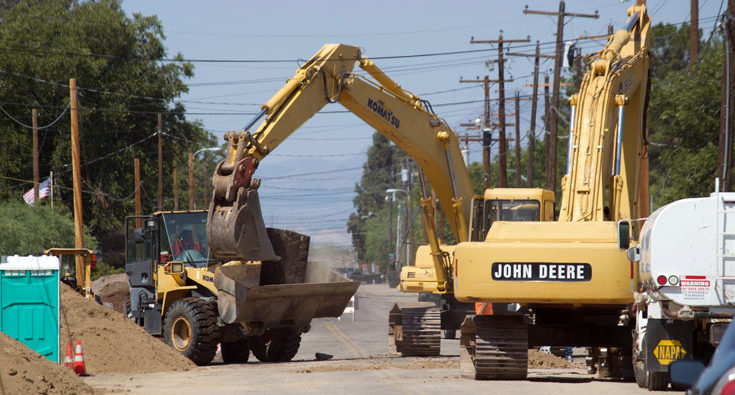Efficiency is crucial in the construction industry. Deadlines are tight, budgets are strict, and delays can cause ripple effects that impact not only a single project but also future contracts. Fortunately, modern construction equipment is transforming how work gets done on job sites. Modern machinery, from sophisticated hydraulics to smart technology, is made to increase output, increase accuracy, and lower project costs overall. Investing in cutting-edge machinery from reputable suppliers like Torgersons construction equipment can give your projects the edge they need to finish on schedule, within budget, and above expectations, regardless of how big or small your crew is.
Here’s how modern construction equipment is reshaping job site efficiency in practical, measurable ways.
1. Faster Completion Of Tasks
Modern construction equipment is significantly faster and more powerful than older models. Whether it’s an excavator with high-performance hydraulics or a bulldozer with enhanced pushing power, these machines allow teams to complete tasks in a fraction of the time.
Time-consuming manual labor—like digging trenches or moving large volumes of soil—can now be handled in minutes rather than hours. A more efficient workflow that keeps projects on track and frees up workers for other duties is the end result.
2. Improved Operator Comfort And Control
Better working conditions are made possible by the ergonomic operator cabins, easy-to-use controls, and climate control features found in modern machinery. When operators are more comfortable, they can focus for longer periods without fatigue—leading to fewer mistakes and more consistent performance.
Additionally, electronic joysticks and touchscreen displays offer more precise control over equipment functions, helping reduce errors and material waste.
3. Integration Of GPS And Telematics
One of the biggest advancements in construction equipment is integrating GPS technology and telematics. GPS-guided machines can automatically grade surfaces, dig trenches to exact depths, or align foundations with pinpoint accuracy.
Telematics systems, on the other hand, collect and transmit data about equipment performance, fuel usage, and maintenance needs. Project managers can monitor machines in real time, optimize fleet use, and plan preventive maintenance to avoid unexpected breakdowns.
This level of insight improves decision-making and ensures that every machine on the site is contributing effectively.
4. Reduced Downtime Through Predictive Maintenance
Modern equipment often comes equipped with sensors that monitor engine health, hydraulic pressure, and wear levels. These systems alert operators and maintenance teams to potential problems before they cause costly downtime.
By acting on early warnings, crews can perform maintenance during planned downtime instead of dealing with emergency repairs in the middle of a workday. This proactive approach keeps machines running and projects moving forward.
5. Fuel Efficiency And Environmental Benefits
Newer machines are designed with fuel efficiency in mind. Improved engines, idle-reduction features, and hybrid systems help reduce fuel consumption without compromising power. This not only lowers operating costs but also reduces the environmental impact of construction projects.
Additionally, some equipment satisfies more stringent emissions regulations, which qualifies it for use in urban or ecologically delicate areas. This compliance can be a key factor in winning bids for green construction projects.
6. Versatility With Multi-Function Attachments
Modern construction equipment is more versatile than ever, thanks to interchangeable attachments. One machine can switch between a bucket, auger, breaker, or grapple with minimal effort, allowing crews to perform a range of tasks without bringing in extra machines.
This multi-functionality reduces clutter on job sites, lowers transportation costs, and enhances operational flexibility—especially for small to mid-sized teams with limited space or budget.
7. Enhanced Safety Features
Safety and efficiency go hand in hand. Modern machines include automated shutdowns, proximity alerts, 360-degree cameras, and improved lighting. These advancements protect both operators and nearby workers, reducing the risk of accidents that can halt work and trigger costly liabilities.
Training operators on this equipment is also easier with digital interfaces and onboard diagnostic systems that offer real-time feedback and error alerts.
8. Remote Monitoring And Machine Control
Remote technology has opened up new possibilities for managing job sites. Some construction equipment can now be operated or monitored remotely, making it easier to control multiple machines or oversee work in hazardous environments without putting personnel at risk.
Fleet managers can also use remote dashboards to coordinate tasks, assign equipment, and monitor usage from a central hub—keeping operations agile and responsive.
Final Thoughts
Modern construction equipment is not just about raw power—it’s about smart, connected, and efficient systems that transform how work gets done. With its enhanced speed, precision, safety, and real-time insights, modern machinery is essential for improving job site performance.

